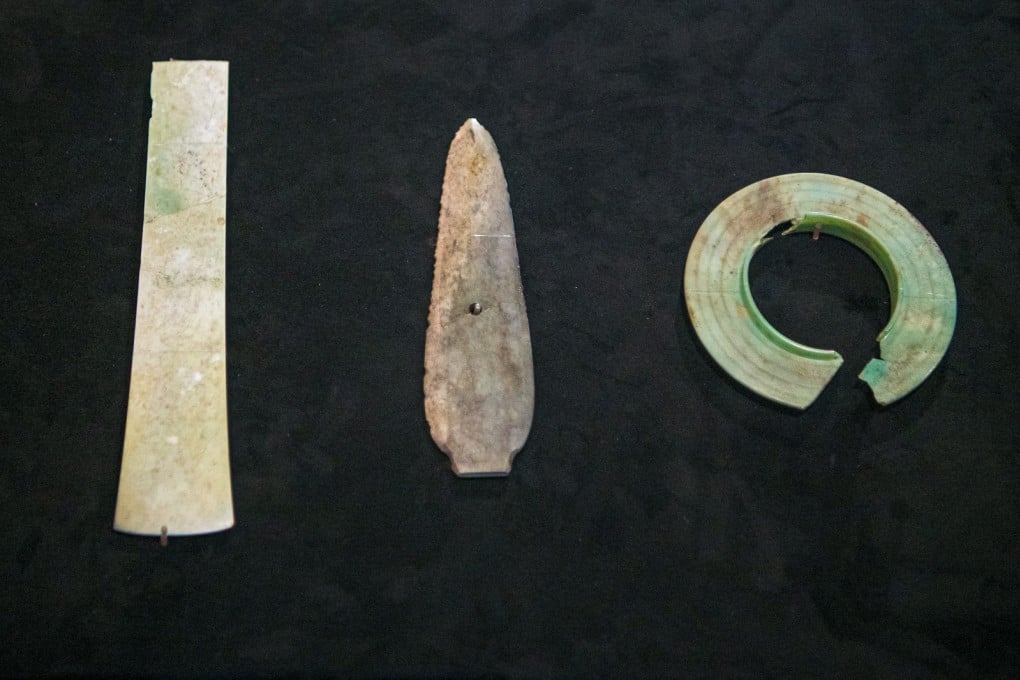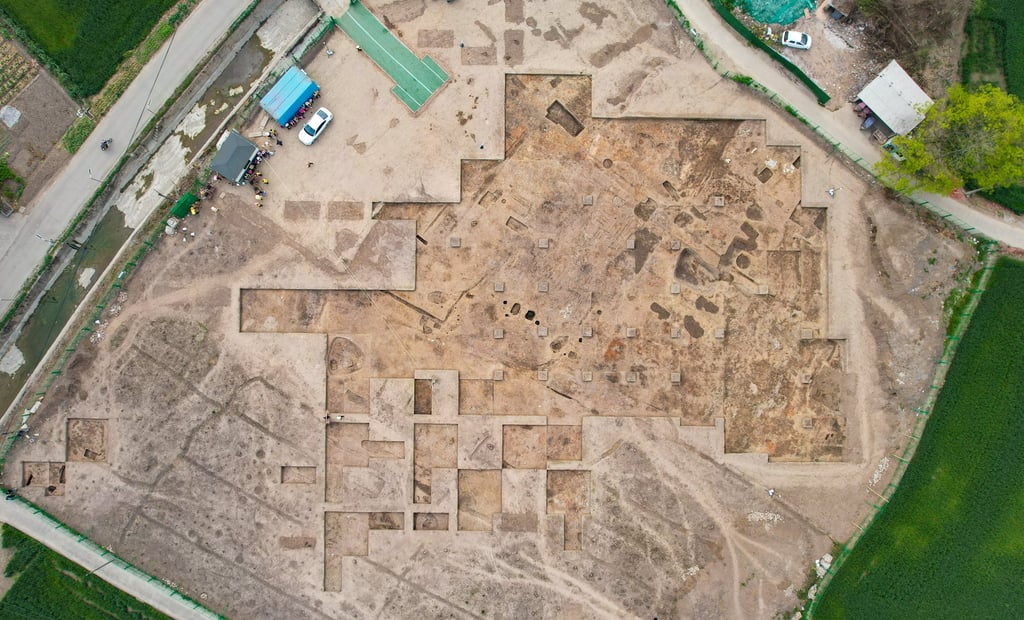Advertisement
Chinese archaeologists unearth 3,400-year-old jade workshop at Sanxingdui ruins
- Discovery in southwest China sheds light on handicraft industry and layout of ancient city believed to be at heart of mysterious Shu kingdom
Reading Time:2 minutes
Why you can trust SCMP
1

Chinese archaeologists have unearthed a jade workshop dating back more than 3,400 years at the Sanxingdui ruins in southwest China, state media said on Tuesday.
Advertisement
“This is the first time a handicraft workshop has been discovered at Sanxingdui. It fills a gap in the archaeological research on Sanxingdui and is of great significance,” said Ran Honglin, director of the Sanxingdui Site Workstation of the Sichuan Provincial Institute of Cultural Relics and Archaeology, in an interview with official news agency Xinhua.
The artefacts include raw jade, finished products as well as scraps, fragments and blank pieces of the stone, representing various stages of the production process.
The discovery sheds light on the origin of the raw materials and stone tools used in the early handicraft industry as well as the functional layout of the ancient city of Sanxingdui, Ran said.

Sanxingdui is considered one of the most important archaeological discoveries of the 20th century, providing a glimpse into a little-known culture that flourished more than 3,000 years ago in what is now Sichuan province.
Advertisement
Archaeologists have uncovered a treasure trove of bronze, gold, jade and ivory objects, all related to sacrificial activities, in a series of pits that lay undisturbed until the mid-1980s.

Advertisement